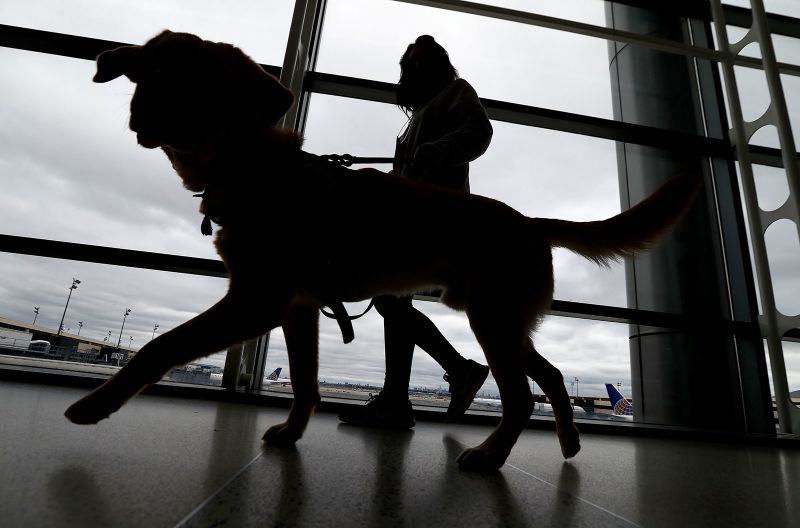The United States has new rules for how dogs are brought into the country, and they go into effect in August.
The US Centers for Disease Control and Prevention announced Wednesday that it is updating regulations for bringing dogs into the United States in an effort to keep the country free of canine rabies.
Starting August 1, the tightened rules require that all dogs entering the US appear healthy upon arrival, be at least 6 months old, be microchipped and be accompanied by a “CDC Dog Import Form” receipt that was filled out online two to 10 days before arrival. These rules apply to all dogs, including service dogs and those who were born in the United States but are returning from another country.
The “CDC Dog Import” permits that are currently used will expire August 31, according to the CDC.
The announcement noted that more requirements may apply based on where the dog has traveled in the previous six months or where they had been vaccinated. The CDC website offers travel checklists for US-vaccinated dogs and foreign-vaccinated dogs from high-risk countries.
Dog rabies was eliminated in the United States in 2007, but the virus remains endemic in more than 100 countries, according to the CDC, and unvaccinated dogs can still contract the disease from wildlife. In the US, rabies is mostly found in wild animals such as bats, raccoons, skunks and foxes. But in certain areas around the world, including parts of Asia, Africa and Central and South America, rabies in dogs remains a major issue.
“For dogs arriving from countries with a high risk of dog rabies, they must be protected against rabies,” the CDC announcement says.
Other requirements may include that titers from blood serology tests be drawn before US entry. These lab tests can check for antibodies in a dog’s blood after the dog is vaccinated against rabies. Rabies titers are good for the life of the dog, as long as the animal stays up to date on rabies booster shots, according to the CDC.
“If your dog’s rabies vaccination expires before you get your dog a booster vaccine, your dog must have another titer drawn at least 30 days after booster vaccination to be eligible for importation. CDC recommends you always keep your dog’s rabies vaccination current,” according to the agency’s website.
If the dog does not have titer results upon arrival, they must be quarantined at an animal care facility for 28 days or until titer results are submitted for review, according to the CDC.
“CDC encourages people traveling with their dogs to use CDC’s new personalized question-and-answer tool, ‘DogBot,’ on the CDC website to determine what rules apply to their dogs based on their travel dates, where their dog is traveling from, and where their dog was vaccinated,” the announcement says. “People should plan in advance for future travel to ensure requirements for dog importations will be met at the time their dogs will enter the United States.”
Jennifer Skiff, director of international at the animal advocacy group Animal Wellness Action, called the new rules an overreach.
“Rabies vaccinations, health certificates and of course microchips make sense,” Skiff said.
“But the CDC is mandating serology titers,” she said. “One of many problems with that, other than being an excessive and costly requirement, is that the agency is requiring they be done in a CDC-approved laboratory, and not all countries have CDC-approved laboratories.”
The American Veterinary Medical Association has said it supports the CDC’s new regulations.
“The AVMA continues to support the CDC’s efforts to improve dog importation standards and is pleased to see the implementation of this new rule that will help protect public health and positively impact canine health and welfare,” President Dr. Rena Carlson said in an emailed statement Wednesday.
These updates “aim to protect the public’s health by preventing the reintroduction of dog rabies into the United States,” CDC spokesperson David Daigle said when the rules were proposed last year. “These updates would establish an importation system designed to reduce fraud and improve the U.S. government’s ability to verify that imported dogs have met U.S. entry requirements.”





